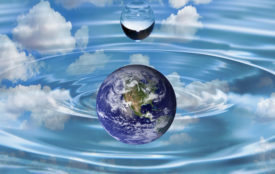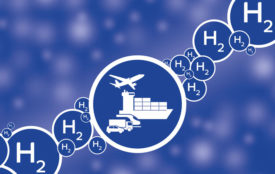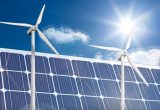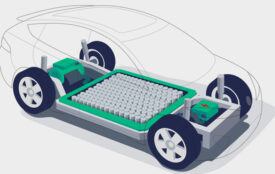Balancing seasonal energy fluctuations with RESTORE
Researchers at TU Wien are developing thermochemical storage systems that can be used to store energy over very long periods with minimal loss.
Energy can be stored in various forms: electrically, thermally or thermochemically. Depending on the storage form used, energy can be stored for different lengths of time or retrieved in different forms. In the EU project RESTORE, researchers at TU Wien have now developed thermochemical energy storage systems that can be used to store energy almost loss-free and over longer periods of time. We are talking about months, years or even decades. Energy can be fed into the system both in the form of thermal energy and in the form of electrical energy. A converter also makes it possible to extract energy in both forms.
These are all important criteria to enable a complete transition to renewable energy sources. For example, as solar energy is available to a much greater extent in summer than in winter, it is important to be able to store the energy efficiently over a longer period of time – for example for the winter, when less solar power can be produced and the energy required for heating increases.
Proof of concept, prototype development and simulations
Franz Winter, head of the Research Group of Thermochemical Process Engineering, explains how the energy is stored: “The storage tanks contain a mixture of oil and salt hydrate. If energy is supplied to the system, the salt hydrate splits off water. This water is collected in a separate circuit and only fed back into the system when energy is required.” The system is reversible, and the materials used in it are safe, cost-effective and highly available. Depending on the oil and salt hydrate used, the suspension has an energy density of approx. 1.1 GJ/m³, which is significantly higher than that of conventional hot water storage systems.
“We started with systems with an output of one kilowatt. In the meantime, we have also developed and are testing systems with an output of five and 30 kilowatts at TU Wien in close cooperation with my colleagues Andreas Werner from the Research Unit of Thermodynamics and Thermal Engineering and Markus Haider from the Service Unit of Energy Conversion,” says Franz Winter. These smaller systems are particularly important for testing feasibility. The scaling of the energy storage systems is an important point and is carried out by simulations from a certain size in the RESTORE project. “We simulate larger systems and use cases with 100, 500 kilowatts or one megawatt at TU Wien. This approach allows us to get an understanding of how the systems can be efficiently integrated for various scales and applications,” says Franz Winter. The ultimate aim of the research team is to bring the energy storage systems developed as part of RESTORE into application.
Use of thermochemical energy storage
Prospectively, thermochemical energy storage systems will be used primarily where waste heat is generated that would otherwise be released unused into the environment. Temperatures between 100°C and 150°C are of particular interest here. Applications that are also simulated as part of RESTORE are factories of all kinds – from cement to paper and to steel. The waste heat generated there can be used by RESTORE technology to supply district heating. The energy yield of solar or geothermal plants can also be increased in this way.









